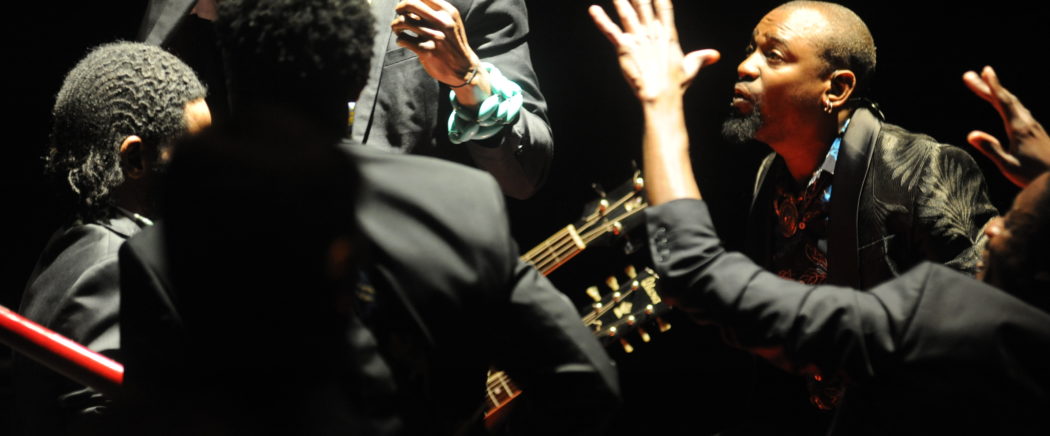There is an alchemy to the art of cultural mixture. Musicians have always reached across borders, inspired by the infusion of fresh, pungent ingredients. But the cooking recipes of hybridity don’t always produce predictable results. Will it be delicious or poisonous? So many fusions settle into the common denominator of commercial pop. What is idiomatic and ancestral fades to a tint, overcome by the techno-beat, the loop, the jazzy ninth chord, or lush strings. Requiem Pour L engages with the world of cross-fertilization—of high and low, east and west, written and unwritten, classical and popular, present and past. It’s a daunting challenge.
How can we navigate these divisions? The oral tradition inhabits a different world than the written one. An old truism: If you take the written score away from a classical musician, he will stop playing, and if you put a written score in front of a folk musician, he will stop playing. But in this new work by les ballets C de la B, one hears the warm, rough-smooth Congolese voice, and one also hears “legit” vibrato, each on its own terms. I’m here and you’re there, and we can enjoy this dialogue. These are superb singers, each able to reach beyond the boundaries of his or her milieu and core training. The secret ingredient is a rare collaborative egalitarianism: Cassol and Platel have invited the performers to present their strengths, equal participants in the endeavor, a multi-faceted dialogue requiring much fine-tuning to assemble over more than two years.
The performance generously brims with many unlikely bedfellows on stage: not just in the use of instruments like accordion, likembe, and tuba, but also languages including Latin, Swahili, Kilari, and others, and genres—music, video, dance, and invocation. The multiplicity is a mellifluous potion, offered at a sweet pace, and never feels hectic or crowded. Sometimes the music moves in grooves that swarm and build; at other times the Mozart is paraphrased closely enough to retain the musical development from the 18th-century score, distilled to a chamber ensemble. The roots and branches are, by some sleight of hand, intact. Mozart’s Requiem was itself a collaborative effort, a work begun by a dying young man and completed by others. This version is a home-built communal event, an ensemble piece that, like a string quartet, is a horse-shoe gathering of musicians in dialogue with one another, where the audience completes the circle. The musicians wander like nomads in paths between memorial-like rectangles. In their midst, a singer gathers stones. Ritual is also present here, communing with forces outside of the concert hall. Yet the emotional weight of the piece is not heavy, but celebrates a life in the uplifting aesthetic so intrinsic to African singing. These bards don’t push into the realm of ethno-theatricality; they wear black suits and shiny concert-dress clothes, not robes or dashikis, perhaps a nod to the formality of death, in a Western way. The pervasive casual sensibility on stage comes from the ease and authenticity they wear in their music.
Whose life is referred to in the title? Throughout the concert, we see video of a woman reclining in a state of terminal illness, projected full-screen behind the performers, an emotional shadow. Her presence is noted musically in carefully placed silences, with only the accordion breathing. Gradually, the distance between the supine figure occupying the cyclorama, and these dynamic multifarious musicians, vanishes. It’s about what music and the carved time of the theater can do to the awesome quotidian path of a slow death, the final border crossing.
Composer, performer, producer, and Arts Professor Andy Teirstein writes music for the concert hall, film, theater, and dance. He is the recipient of awards from the National Endowment for the Arts, the New York Foundation for the Arts, and the American Composers Forum, among others, and Director of the NYU Global Institute for Advanced Study Working Group Translucent Borders, which explores the role of music and dance at cultural and geographic borders.
